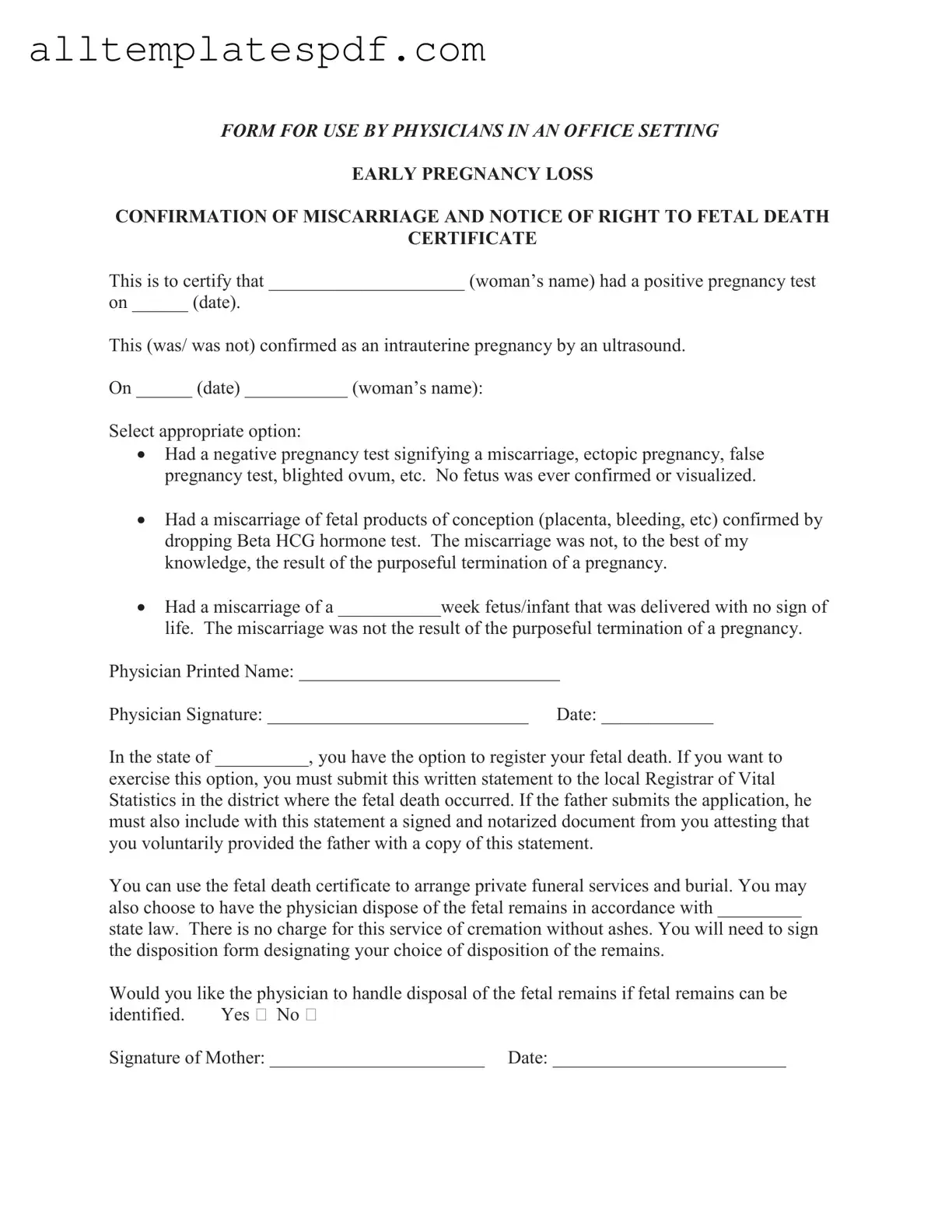Fill Out a Valid Miscarriage Discharge Paper Form
The Miscarriage Discharge Paper form is an important document used by physicians to confirm early pregnancy loss and provide necessary information regarding fetal death certification. This form serves to certify the details of the miscarriage, including the woman's name and the dates of relevant medical events. For those navigating this difficult time, filling out the form can help facilitate the next steps in the process.
To begin, click the button below to fill out the form.
Open Editor
